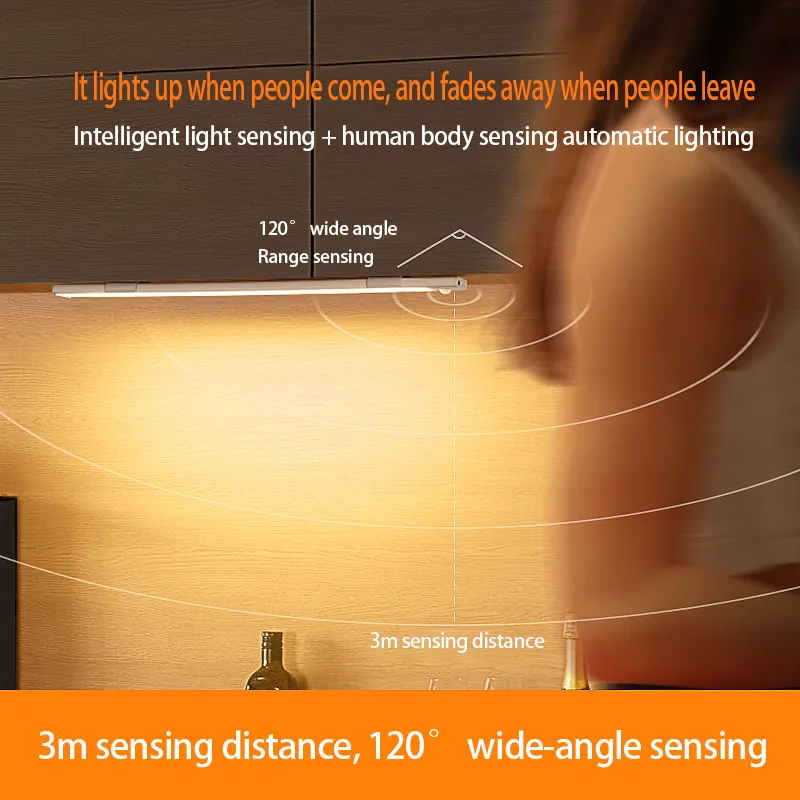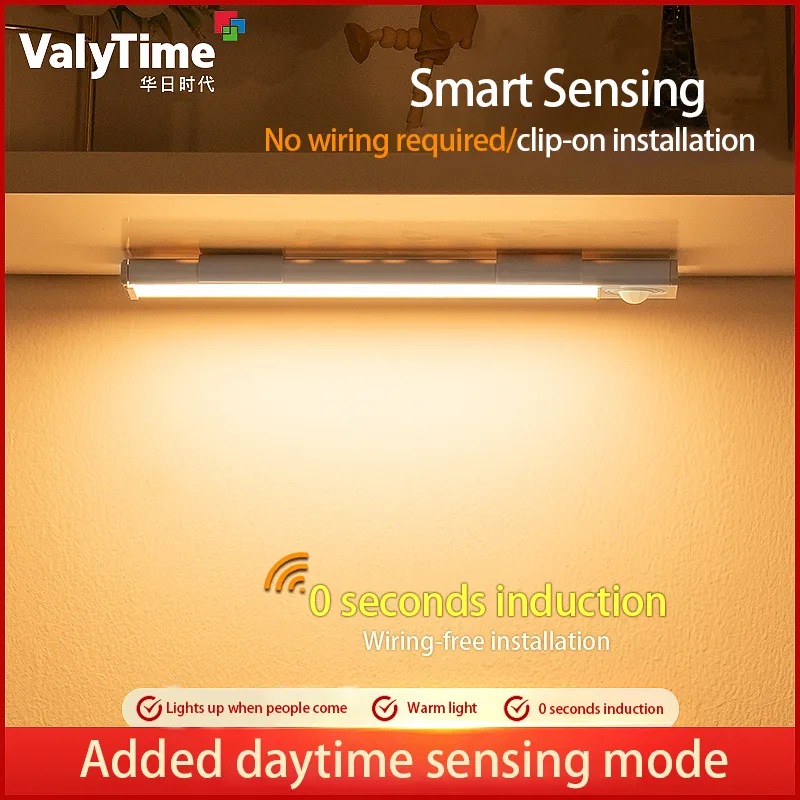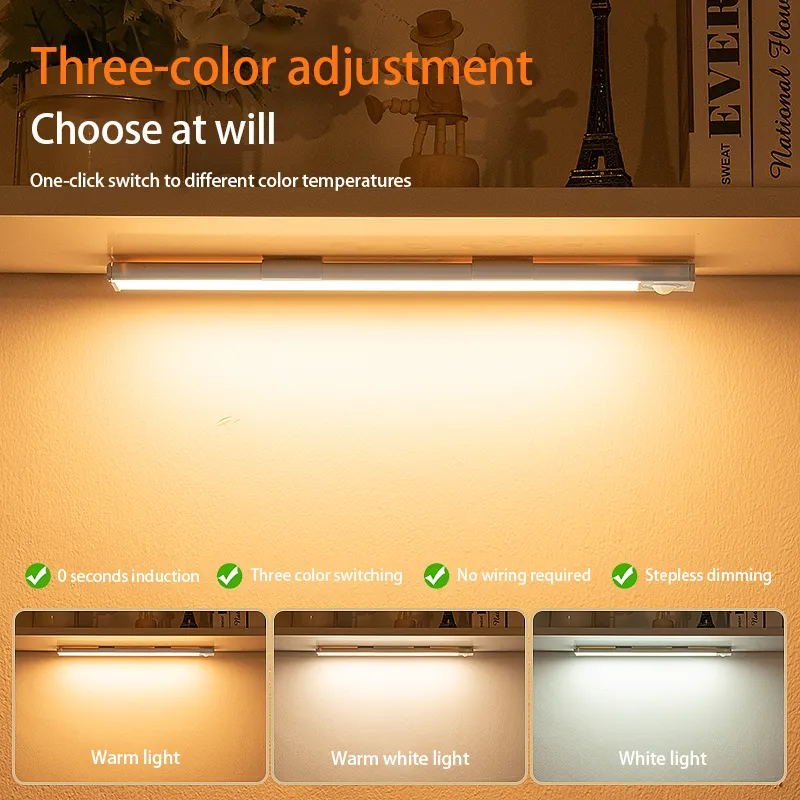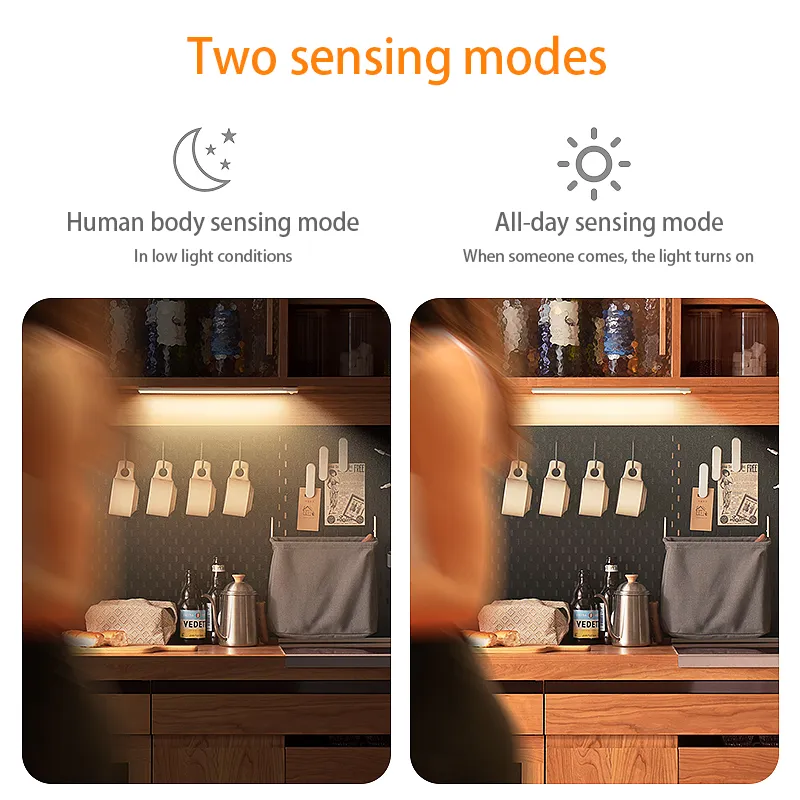Why does my LED Motion Sensor Night Light go out so quickly?
LED Motion Sensor Night Light is a smart lighting device that can detect human activity through sensors, automatically light up at night or in dimly lit environments, and automatically go out after no activity. This smart sensing function not only provides convenience, but also greatly reduces energy waste. However, during use, many users found that their LED Motion Sensor Night Light went out too quickly, sometimes even when they were still in the room, affecting the normal use experience.
So why does my LED Motion Sensor Night Light go out so quickly? This article will analyze in detail from multiple aspects such as sensor type, sensitivity setting, sensing range, light interference, power supply problems, firmware failure, etc. to help users find out the cause of the problem and provide corresponding solutions to ensure that the LED Motion Sensor Night Light works properly.

What causes LED Motion Sensor Night Light to go out too quickly?
To understand why LED Motion Sensor Night Light goes out in a short period of time, we need to start with its working principle. Generally, the core sensing technology of LED Motion Sensor Night Light mainly includes passive infrared sensor (PIR) and microwave radar sensor, which detect human motion signals in the environment to determine whether the light should continue to light up.
Here are several common reasons that may cause LED Motion Sensor Night Light to turn off too quickly:
1. The preset off time is too short
Cause analysis:
Most LED Motion Sensor Night Lights have an automatic off delay time, that is, when the sensor detects no motion, the light will automatically turn off after a set time.
The default off time of some LED Motion Sensor Night Lights may be short (such as 5 seconds or 10 seconds), causing the light to turn off in a short time, even if the user is still active in the room.
Solution:
✔ Check the manual of the night light to see if the off delay time can be manually adjusted. If possible, it is recommended to extend the off time to 30 seconds to 1 minute so that the light can last longer.
✔ If the night light has a "delay mode" or "long light mode", try to enable these features to see if it can effectively extend the time the light is on.
2. Limited motion sensing range
Cause analysis:
LED Motion Sensor Night Light usually has a specific sensing range (usually 2-5 meters) and sensing angle (usually 120° or 180°). If the user moves outside the sensing range, the sensor may not detect human motion, causing the light to turn off prematurely.
If the sensor is installed in an improper position, such as being partially blocked by furniture, walls or other obstacles, the sensor may not detect human activity correctly, causing the light to turn off too quickly.
Solution:
✔ Check the sensor's installation angle to ensure that the sensor can cover major activity areas, such as corridors, bedside or stairs.
✔ Avoid obstructions to the sensor, such as tables, chairs, curtains, etc., which may affect the sensor's normal detection ability.
✔ If possible, choose an LED Motion Sensor Night Light with an adjustable angle, which can optimize the sensor's sensing direction and make it easier to detect human motion.

3. Low sensor sensitivity
Cause analysis:
Some LED Motion Sensor Night Light allow users to adjust the sensitivity of the sensor. If the sensitivity is set too low, the sensor may not detect smaller movements, such as sitting and reading, slightly moving the arm, etc., causing the light to turn off.
In some cases, the PIR sensor may be more sensitive to fast-moving targets, but not to slow-moving targets (such as standing still or slowly moving gestures), causing the light to turn off too quickly.
Solution:
✔ Check the manual to see if you can manually adjust the sensitivity of the sensor. If so, try to increase the sensitivity so that it can detect more subtle movements.
✔ During use, try to make larger movements (such as waving or walking) to see if you can reactivate the light.
✔ If the lamp supports replacing the sensor module, you can consider upgrading to a higher sensitivity sensor to improve detection accuracy.
4. Light environment interference
Cause analysis:
LED Motion Sensor Night Light usually has a light sensor, which decides whether to turn the light on or off based on the intensity of the ambient light. If the ambient light is too bright, the light may be automatically turned off even if the user is still within the sensing range.
For example, if the LED Motion Sensor Night Light is installed near a window, natural light during the day may trick the light sensor into thinking that the environment is bright enough and turn off the light prematurely.
Solution:
✔ Test the performance of the night light under different lighting conditions to see if it turns off faster in a specific light environment.
✔ If possible, adjust the light sensor threshold to keep the light on at lower brightness.
✔ Avoid installing the night light in direct sunlight or near other strong light sources, such as windows, TV screens, or table lamps.
5. Power supply problems cause the light to turn off abnormally
Cause analysis:
The LED Motion Sensor Night Light is usually powered by a battery or USB. If the battery is low or the power supply is unstable, the light may turn off prematurely.
When the battery is low, the battery-powered night light may not be able to stay on continuously due to insufficient voltage, causing the light to turn off in a short time.
Solution:
✔ If it is battery-powered, try replacing the battery with a new one to see if it can improve the duration of the light.
✔ If it is USB-powered, check whether the power adapter or data cable is damaged and ensure stable power supply.
✔ If the LED Motion Sensor Night Light supports rechargeable lithium batteries, you can try to retest after fully charging.

How to prevent the LED Motion Sensor Night Light from going out too quickly?
Through the above analysis, we can come up with the following solutions to help users optimize the experience of using the LED Motion Sensor Night Light:
● Adjust the delay time of going out (try to extend it to 30 seconds to 1 minute)
● Optimize the installation position (make sure the sensor can cover the main activity area)
● Increase the sensitivity of the sensor (make sure it can detect subtle movements)
● Avoid light interference (avoid being close to windows or other strong light sources)
● Check the power supply status (replace the battery or ensure that the USB power supply is stable)
If your LED Motion Sensor Night Light goes out too quickly, try to adjust it according to the above method, I believe it can effectively improve the use effect and make it run more intelligently and stably.

For over 28 years, Huari Lighting Co., Ltd. has been a trusted manufacturer of LED lighting products. Based in China, our factory spans 92,000 square meters and produces over 1 million lighting products monthly. We specialize in a variety of LED lighting solutions, including downlights, ceiling lights, and energy-efficient bulbs like GU10 and PAR. Our products are ISO 9001 and ISO 14001 certified, ensuring exceptional quality. With CE, RoHS, and ERP certifications, our products meet global safety and environmental standards. Huari Lighting offers competitive prices, wholesale discounts, and customized designs. Contact us today to receive a quote and take advantage of our promotions.
